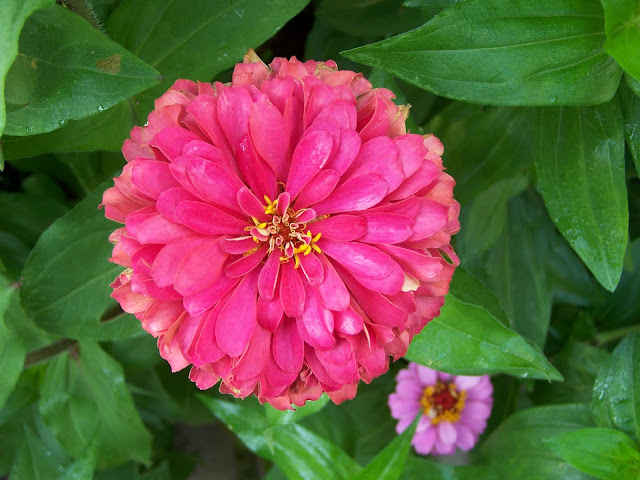I’ll be honest. I welcomed the frost. Although the idea of moving south to the Land of Mild Winters and Long Growing Seasons appeals to the idealist in me, the realist faces the music: I haven’t even got the stamina for Zone 5's demands. August is about my limit, so you can imagine what my garden looks like by the time November rolls around. Frankly, Old Man Winter will do me a favor: he'll weed my garden free of charge.
The credits are rolling on this column as well. As winter’s icy grip seeps into Kankakee county, my gardening inspirations are going dormant. The wily weeds, the bothersome bugs, the persnickety plants: they're all bedding down for a long winter’s nap. And as a wise man once said, "When in Rome....". Really, as a mother to three rambunctious kids, hibernation is just naturally appealing. It doesn't take much to convince me to take a rest (especially with flannel sheets cozying up the deal). The time has come to give my aching Zone 5 fingers a break from the keyboard, but I’ll rev up the writing once again come spring, as my muses arise from their slumber. I bid you adieu and wish you a Happy Thanksgiving, a Merry Christmas, a Joyous New Year and a Romantic Valentine's. Hopefully St. Patrick's Day will find us all well rested. On that note, I leave you with my 2011 garden awards recognition, also known as:
The Golden Glove Awards
(Not to be confused with any related Boxing awards)
The Tough Nut Award goes to our John Deere push mower. It's been mistreated by the mechanically-challenged (me). It's waded through excessively moist, excessively long grass. It's wrangled with creeping Charlie and driven over doggie doodles. It's been rammed into the picket fence repeatedly. After all this, it still runs. A machine like that deserves more than an honorable mention. It deserves a 6 month vacation.
The Bad Guys We Love to Hate Award goes to the ridiculously rampant grass that attacked every one of my beds. You may have declared victory this year, but I'll be on my toes and armed with hoes come spring.
The Miracle Grow Award goes to my entire herb garden. By my back door lies a patch of soil littered with huge buried chunks of concrete (after many attempts, I can tell you, removal is not recommended). In this inhospitable, shallow sprinkling of dirt, Thyme, Oregano, Basil, Lemon Balm and Lavendar have taken hold (without any help from Miracle Gro!).
The Delayed Gratification Award goes to my Hellebore. I'm pretty short on self control. When I spend money, I want to see results now (as opposed to 6 months later), so this was a very determined purchase. When the first petals peek out of the snow this March, I will be jumping for joy in my flannel pajamas.
The Going Down in Flames Award goes to my Serviceberry tree. Fall color simmered through the leaves like a Caribbean sunset. After delighting in a full show of spring flowers and summer berries, I was amazed to see it had saved the best for last.
The Horticultural Camouflage Award goes to the vibrant display of Vinca and Alyssum by my front steps. It did an admirable job of dressing up the continuing porch renovation. Who knew camo came in pink and purple?
The Lewis and Clark Award goes to my son, Tyler. Judging by the size of the gorge he dug in my back garden, I am forced to deduce he was trying to reach China. In the future, Junior Explorers will be required to get work permits from their garden-Mama.
The Lewis and Clark Award goes to my son, Tyler. Judging by the size of the gorge he dug in my back garden, I am forced to deduce he was trying to reach China. In the future, Junior Explorers will be required to get work permits from their garden-Mama.
The Going Down in Flames Award goes to my Serviceberry tree. Fall color simmered through the leaves like a Caribbean sunset. After delighting in a full show of spring flowers and summer berries, I was amazed to see it had saved the best for last.
What Golden Gloves would you hand out in YOUR garden?






























